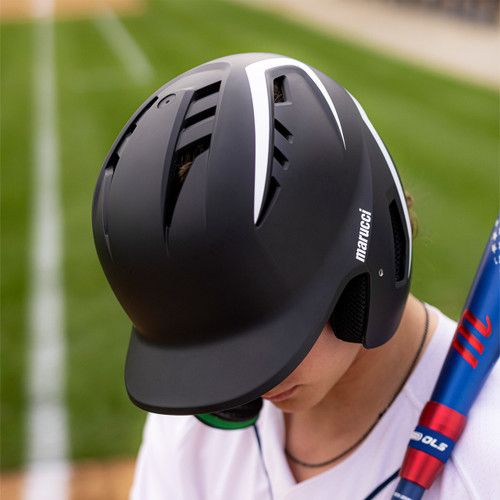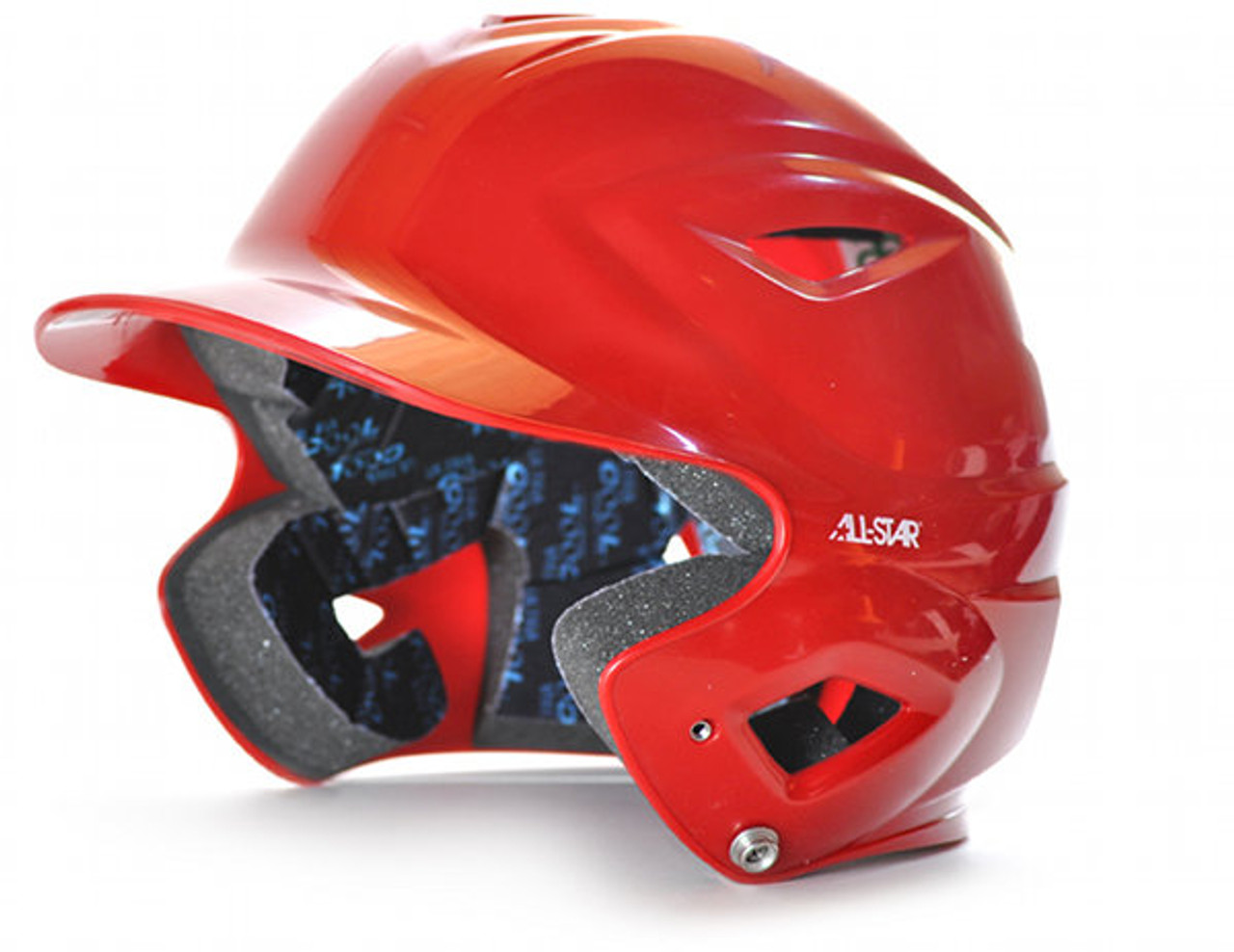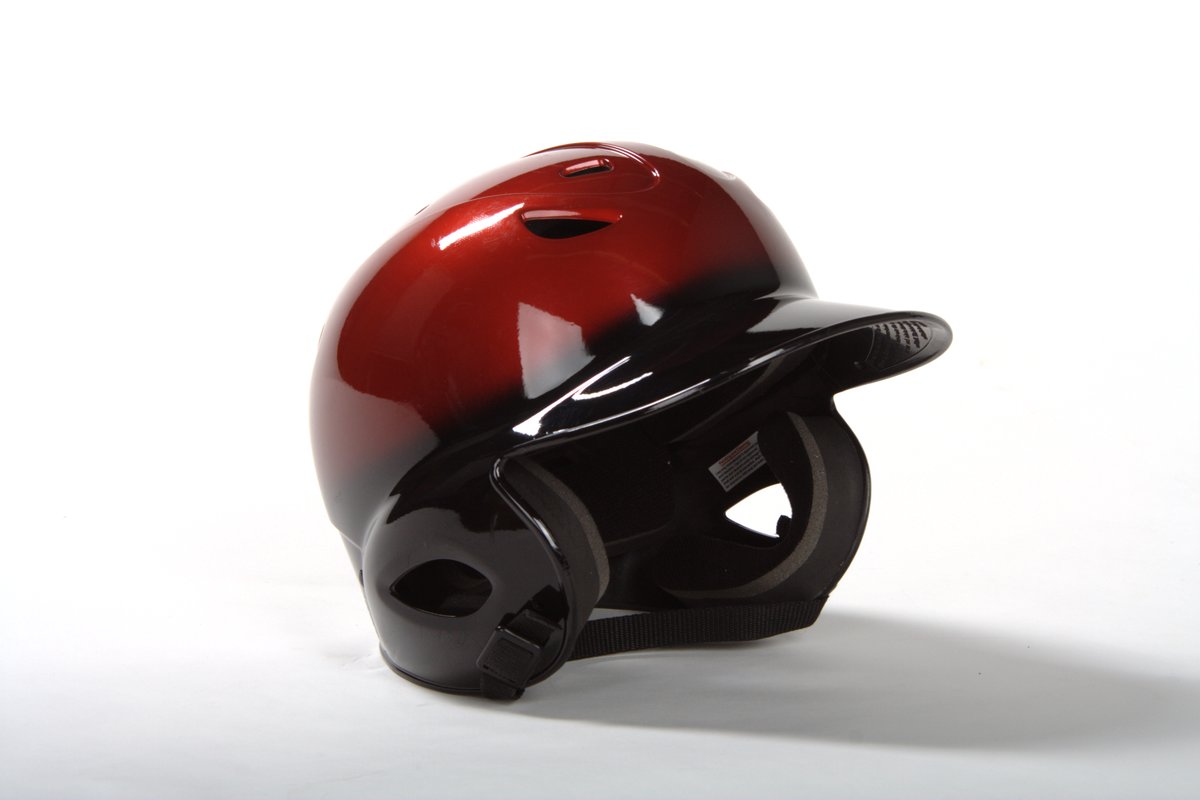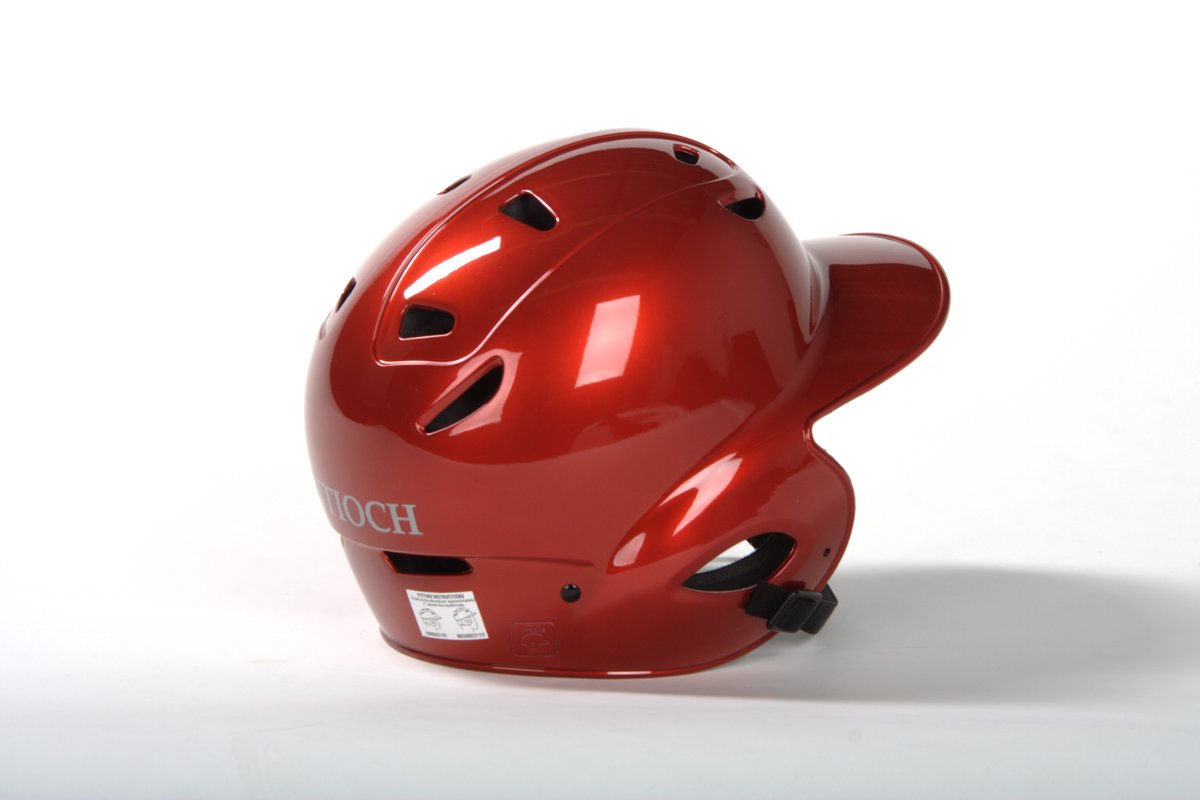Introduction
In the world of football, safety is paramount. The physical nature of the sport necessitates robust protection, especially for the head, where impacts can lead to serious injuries. Football helmets serve as critical protective gear, designed to mitigate the risk of concussions and other head injuries. This comprehensive review explores the safest football helmets available, detailing their construction, safety features, technological advancements, and how they contribute to player protection.
Prioritizing Safety in a High-Impact Sport
Football is a sport celebrated for its intense physicality and competitive spirit, but it also comes with significant risks, particularly regarding head injuries. As such, the safety of players is of paramount concern, with helmets being the primary piece of equipment tasked with minimizing the danger. Advances in technology and design have led to the development of helmets that offer superior protection, reducing the likelihood of concussions and other head-related injuries. In this comprehensive analysis, we will explore the topic of the safest football helmets from five perspectives: construction and materials, fit and comfort, impact absorption technology, certification and testing, and player feedback and adoption. By examining these key factors, we can gain a deeper understanding of what makes a helmet not only effective in safeguarding players but also a critical component in the evolution of football safety standards.
The Importance of Helmet Safety in Football
Preventing Head Injuries
The primary objective of a football helmet is to shield the player’s head from impacts, reducing the risk of injuries such as concussions, skull fractures, and traumatic brain injuries:
- Impact Absorption: Helmets are engineered to absorb and dissipate impact forces, minimizing the direct effect on the skull and brain.
- Cranial Protection: A helmet’s robust outer shell and inner padding create a protective barrier between the player’s head and external impacts, whether from collisions or falls.
Safety Standards
Football helmets must meet rigorous safety standards and certifications to ensure they provide adequate protection:
- NOCSAE Certification: The National Operating Committee on Standards for Athletic Equipment (NOCSAE) sets standards for football helmets, requiring them to pass stringent impact tests.
- Manufacturers’ Specifications: Leading helmet manufacturers conduct extensive testing, including bio-mechanical analysis and field trials, to meet or exceed recognized safety standards.
Key Features of Safe Football Helmets
Advanced Materials
The materials used in constructing football helmets are pivotal for their protective capabilities:
- Polycarbonate Shells: Known for their durability and impact resistance, polycarbonate shells help disperse the force of collisions across a wider surface area.
- Foam Padding: Multi-layer foam padding inside the helmet provides cushioning, reducing the risk of concussion by absorbing shock.
Innovative Padding Systems
Modern football helmets incorporate advanced padding systems designed to enhance impact absorption and comfort:
- Air Bladders: Adjustable air bladders offer a customizable fit and additional cushioning, improving overall safety and comfort.
- Memory Foam: Memory foam padding conforms to the shape of the player’s head, providing tailored protection and maintaining fit during high-impact activities.
Fit and Stability
A helmet’s fit and stability directly impact its protective qualities:
- Customizable Fit: Features like adjustable chin straps, padded jaw areas, and inflatable bladders ensure a secure, personalized fit for each player.
- Stability Enhancements: Stability systems, such as rear cradles and reinforced liners, maintain the helmet’s position during collisions, ensuring continuous protection.
Top Football Helmets for Player Protection
Riddell SpeedFlex
Riddell is renowned for its commitment to player safety, and the SpeedFlex helmet exemplifies cutting-edge protection:
- Patented Flex System: The Flex System disperses impact forces, minimizing the risk of injury.
- Cam-Loc System: This unique chin strap design enhances fit and reduces helmet movement during plays.
- Visor Attachment: Integrated attachment points for visors add another layer of facial protection.
Schutt F7
Schutt’s F7 helmet is designed for maximum protection and performance on the field:
- Tektonic Plates: The Tektonic plate design allows independent movement, absorbing rotational impact forces effectively.
- TPU Cushioning: The thermoplastic urethane (TPU) cushioning system provides superior impact absorption.
- Helmet Fit System: The Helmet Fit System allows for micro-adjustments, ensuring a snug and stable fit for optimal protection.
Xenith Shadow XR
Xenith has made significant strides in helmet technology with the Shadow XR, prioritizing safety without compromising performance:
- Adaptive Head Protection: Featuring Xenith’s Shock Bonnet, which adapts to impact forces.
- Fit Seeker System: This innovative system self-adjusts to the head, maintaining a secure fit throughout gameplay.
- Lightweight Construction: Despite its robust protection, the Shadow XR remains lightweight, enhancing comfort and player mobility.
Factors to Consider When Choosing a Football Helmet
Type of Play and Position
Different positions on the field may require specific helmet features:
- Linemen: Helmets with reinforced front padding and stability systems are ideal for linemen who frequently engage in high-contact situations.
- Skill Positions: Helmets for skill positions, such as receivers and quarterbacks, should balance protection with lightweight design for increased agility.
Player Comfort and Fit
Ensuring the helmet fits properly is crucial for safety and performance:
- Head Shape and Size: Helmets should be available in various sizes and include adjustable features to conform to different head shapes and sizes.
- Weight Distribution: Balanced weight distribution prevents neck fatigue and ensures comfort during extended play.
Durability and Maintenance
Football helmets must withstand rigorous use and require regular maintenance:
- Material Longevity: High-quality materials ensure durability over multiple seasons.
- Ease of Maintenance: Helmets should include removable padding and easy-to-clean surfaces for regular upkeep.
Safety Innovations in Football Helmet Design
Impact Monitoring Systems
Some modern football helmets come equipped with impact monitoring systems that track the forces experienced during gameplay:
- Sensors and Data Analysis: Embedded sensors collect data on impacts, helping teams monitor player safety and detect potential injuries.
- Real-Time Alerts: Some systems provide real-time alerts to medical staff, ensuring prompt attention to possible concussions.
Advanced Shell Designs
Innovations in helmet shell design aim to enhance protection:
- Multi-Layer Shells: Multi-layer designs incorporate several materials to maximize impact absorption and distribution.
- Rotational Impact Reduction: New designs focus on reducing rotational forces, which are a significant contributor to concussions.
Enhanced Ventilation
Proper ventilation not only improves comfort but also enhances safety:
- Airflow Channels: Helmets with advanced ventilation systems keep players cool, reducing fatigue and maintaining focus.
- Moisture-Wicking Liners: Internal liners that wick away moisture help keep the helmet dry and comfortable, preventing slipping and ensuring a secure fit.
Maintenance and Care for Football Helmets
Regular Inspection
Consistent inspection and maintenance are essential to ensure helmets function effectively:
- Check for Damage: Regularly inspect the shell and padding for cracks, wear, or damage.
- Verify Fit: Ensure the helmet maintains a snug fit, with all adjustable components functioning properly.
Cleaning Procedures
Keeping helmets clean is essential for hygiene and longevity:
- Removeable Padding: Many helmets feature removable padding that can be washed and replaced.
- Surface Cleaning: Clean the helmet’s shell with appropriate cleaning solutions to avoid degradation of materials.
Replacement Timing
Knowing when to replace a helmet is crucial for maintaining protection:
- Manufacturer Guidelines: Follow the manufacturer’s recommendations for helmet lifespan and replacement.
- Impact History: Helmets that have sustained significant impacts should be replaced to ensure ongoing protection.
Construction and Materials:
The Foundation of Helmet Safety
The architecture of a football helmet is critical to its ability to protect players. Manufacturers have made great strides in materials science, innovating the use of stronger, lighter, and more durable materials. High-performance plastics, polycarbonate shells, and impact-resistant foams have become standard in the construction of top-tier helmets. These materials are engineered to absorb and dissipate the forces of impact, reducing the stress transmitted to the player’s head.
In addition to the external shell, the internal padding is equally important. Memory foam, gel inserts, and advanced air cushion systems conform to the player’s head, providing an additional layer of protection. The research and development of these materials are ongoing, ensuring that every new model offers an improvement in player safety. Ultimately, the thoughtful integration of these innovative materials in helmet construction is foundational to enhancing the safety of the game as players take to the field.
Fit and Comfort:
Customizing Protection
A helmet’s effectiveness is heavily influenced by how well it fits the player. A helmet that is too loose can slip during play, while one that is too tight can cause discomfort or even pain. Manufacturers have recognized this and have focused on creating helmets that provide a customizable fit. Various sizes, along with adjustable padding and retention systems, ensure that each player can find a helmet that fits their unique head shape and size.
The importance of a comfortable, well-fitting helmet cannot be overstated. It not only improves the safety profile of the helmet but also allows players to focus on the game without the distraction of an ill-fitting piece of equipment. As players don these carefully fitted helmets, they can trust in their gear and play to their full potential, knowing they are well-protected.
Impact Absorption Technology:
Innovations in Collision Protection
To mitigate the forces players face on impact, the safest football helmets incorporate advanced technologies explicitly designed to absorb and redirect energy. One of the most significant innovations in this area has been the development of multi-layered padding systems that work synergistically to protect the brain. These systems often include specialized liners that address different types of forces, such as linear impacts and rotational acceleration, which can contribute to concussions.
New technologies continue to emerge, including shock-absorbing pillars, honeycomb structures, and even built-in sensors that monitor impact severity. The integration of these technologies into helmet design represents a quantum leap in player safety, providing a level of protection that is informed by rigorous scientific research and real-world testing. As players gear up with these technologically advanced helmets, they carry with them the latest in safety engineering, giving players, coaches, and families added confidence every time they step onto the field.
Certification and Testing:
Ensuring Helmet Safety through Rigorous Standards
Behind every safe football helmet is a battery of rigorous testing and certification processes that ensure it meets or exceeds established safety standards. Organizations like the National Operating Committee on Standards for Athletic Equipment (NOCSAE) set the benchmarks helmets must meet to be deemed safe for play. These standards are continuously updated to reflect the latest research on head injuries and advancements in helmet technology.
Manufacturers subject their helmets to a series of impact tests that simulate a variety of game scenarios, ranging from high-velocity collisions to repetitive lower-impact hits. The helmets that pass these tests receive certification, a seal of approval that they have met the stringent criteria for protection. By adhering to these standards, helmet manufacturers commit to a baseline of safety, providing players with equipment that is not only built to withstand the rigors of the game but also designed to offer the best protection possible.
Historical Development
The journey of football helmets from simple leather caps to sophisticated protective gear highlights the advancements in player safety:
- Early Leather Helmets: The first football helmets, used in the early 20th century, were made of soft leather and provided minimal protection.
- Plastic Helmets (1940s): Introduction of plastic helmets marked a significant improvement in durability and impact resistance. This era also saw the incorporation of face masks.
- Modern Era (2000s Onwards): Modern helmets feature advanced materials, rigorous testing, and innovative safety technologies, reflecting continuous research and development in player protection.
Detailed Analysis of Top Football Helmets
Riddell SpeedFlex
Features and Benefits:
- Flex System: This system allows the helmet’s shell to flex slightly upon impact, absorbing shock and reducing the risk of head injuries. The flexibility also helps distribute the impact force over a larger area.
- Precision-Fit Technology: Leveraging 3D scanning and printing, Precision-Fit ensures a customized fit for each player, enhancing comfort and minimizing movement during play.
- Tru-Curve Liner System: The helmet’s liner is designed to conform to the natural contours of the player’s head, providing an even distribution of pressure and improved comfort.
Impact on Player Safety:
The SpeedFlex’s design has been widely adopted in both professional and amateur football leagues. Its impact-reducing technology has contributed to a noticeable decrease in concussion incidences among players using this model.
Schutt F7
Features and Benefits:
- Tektonic Plates: These small, independent plates on the helmet’s shell effectively manage rotational forces often involved in head injuries, offering protection against both linear and rotational impacts.
- 3D Tektonic System: Integrates the Tektonic Plate Technology with additional 3D padding, significantly improving the helmet’s ability to absorb and disperse impact forces.
- Xenith Shock Matrix Technology: This energy control system consists of layers that move independently to reduce both linear and rotational forces, making the F7 one of the safest options available.
Impact on Player Safety:
The Schutt F7 is praised for its comfort and safety features. Players report consistent protection across various positions, thanks to its ability to manage different types of impact effectively.
Xenith Shadow XR
Features and Benefits:
- Adaptive Shock Bonnet: The Xenith Shadow XR features a unique Shock Bonnet suspension system that conforms to the head and absorbs impact forces independently.
- Fit Seeker System: A self-adjusting system that eliminates the need for air bladders or manual adjustments, ensuring a perfect fit for every play.
- Polycarbonate Shell: Enhanced with multiple protective layers, the polycarbonate shell ensures both durability and superior impact resistance.
Impact on Player Safety:
The Shadow XR’s innovative design and adaptive systems provide comprehensive protection across a range of impacts. Players using this helmet benefit from its high level of customization and effective shock absorption.
Emerging Technologies in Football Helmets
Smart Helmets
Smart helmets equipped with built-in technology are becoming increasingly popular for monitoring player safety:
- Impact Sensors: Embedded sensors track impact forces experienced during gameplay, allowing for real-time data collection and analysis.
- Data Analytics: Coaches and medical staff can use impact data to identify patterns, monitor player safety, and make informed decisions regarding playing time and recovery.
Virtual Reality Integration
Virtual Reality (VR) is being integrated into helmet design and training programs:
- Training Simulations: VR allows players to experience high-intensity situations and practice responses without physical contact, reducing the risk of injury during training.
- Design Testing: VR can simulate various impact scenarios to test helmet designs, speeding up the development process and enhancing safety features.
Professional Insights
Interviews with Experts
Gathering insights from professionals in the field can provide valuable perspectives on the effectiveness of current helmet technologies:
- Sports Medicine Professionals: Doctors and athletic trainers can offer firsthand accounts of how modern helmets have impacted player safety and injury rates.
- Helmet Designers and Engineers: Engineers who design and test helmets can provide technical details on the latest innovations and advancements in helmet materials and construction.
Case Studies and Real-World Applications
NFL’s Helmet Safety Program
The NFL has implemented several initiatives to improve helmet safety across the league:
- Helmet Performance Rankings: The NFL conducts annual safety performance tests on helmets and publishes the results to help players and teams make informed choices.
- Partnerships with Manufacturers: Collaborations between the NFL and helmet manufacturers drive the development of safer helmet technologies, incorporating feedback from players and safety experts.
High School and Collegiate Programs
High school and college football programs also prioritize helmet safety:
- Investment in Technology: Many programs have invested in the latest helmet technologies to protect young athletes and reduce the incidence of head injuries.
- Education and Awareness: Schools promote education on proper tackling techniques and the importance of wearing properly fitted helmets to further enhance player safety.
Maintenance Tips and Best Practices
Daily and Weekly Checks
Regular maintenance can extend the lifespan of a helmet and ensure it continues to provide optimal protection:
- Daily Inspections: Check for visible damage, such as cracks in the shell or worn-out padding.
- Weekly Adjustments: Ensure all adjustable components, such as chin straps and fit systems, are functioning correctly and providing a secure fit.
Long-Term Care
Proper long-term care involves storing and handling helmets appropriately to maintain their integrity:
- Storage Conditions: Store helmets in a cool, dry place away from direct sunlight or extreme temperatures.
- Off-Season Care: During the off-season, perform a thorough inspection and clean the helmet according to the manufacturer’s instructions before storage.
Future Directions in Football Helmet Design
Continuous Innovation
The future of football helmet design will likely see continued innovation focused on enhancing player protection:
- Material Advancements: Research into new materials that combine lightweight properties with high impact resistance will drive the next generation of helmets.
- Custom 3D Printing: Custom 3D printing technology will enable even more personalized helmet designs tailored to the specific needs and measurements of individual players.
Increased Data Integration
The integration of data analytics will play a significant role in improving helmet safety and performance:
- Real-Time Monitoring: Advanced monitoring systems will provide instant feedback on helmet performance and player safety, allowing for immediate adjustments and interventions.
- Predictive Analytics: Using historical data to predict and prevent injuries will become a key component of helmet design and player safety programs.
Player Feedback and Adoption:
The Ultimate Test of Helmet Safety
The adoption of a particular helmet model by players, and their subsequent feedback, is an invaluable aspect of assessing a helmet’s safety. Players are the ultimate end-users and are in the best position to provide insights into the helmet’s performance in real game conditions. Comfort, visibility, fit, and overall confidence in the helmet’s protective capabilities are all factors that players consider and are critical to the helmet’s success.
Manufacturers often work closely with players to gather feedback, which is then used to refine and improve helmet designs. The widespread use of a helmet in professional, collegiate, and high school football leagues serves as testimony to its effectiveness and safety. As players at all levels continue to choose and trust these helmets with their safety, it solidifies the helmet’s reputation as a reliable protector in the demanding environment of football.
Championing Player Safety with Advanced Football Helmet Design
As we conclude this exploration into the safest football helmets, it becomes apparent that player protection is a multifaceted endeavor that extends well beyond the playing field. The combination of cutting-edge materials, personalized fit, innovative impact absorption, rigorous certification, and player-centric feedback all contribute to the creation of helmets that can effectively safeguard athletes from the inherent risks of the game. This synergy of science, engineering, and user experience is at the heart of advancing football helmet safety. As the sport continues to grow and evolve, so too will the technology and design of helmets, ensuring that player safety remains a top priority. The commitment to protecting players underscores the collective responsibility of manufacturers, coaches, and the players themselves, uniting them in the common goal of making football a safer sport for all who love and participate in it.
Conclusion
Football helmets are indispensable for protecting players against the risks inherent in this contact sport. With advancements in material science, innovative design, and technology. The modern football helmet offers enhanced safety features that significantly reduce the risk of head injuries.
The Riddell SpeedFlex, Schutt F7, and Xenith Shadow XR stand out as exemplary models, each offering unique innovations aimed at preserving player safety.
As the science behind football helmet design continues to evolve. Players can look forward to even greater safety and performance enhancements, allowing them to focus on the game while minimizing the risk of injury. By investing in the safest football helmets, players safeguard their health, contributing to a safer and more enjoyable football experience.





Leave a Reply